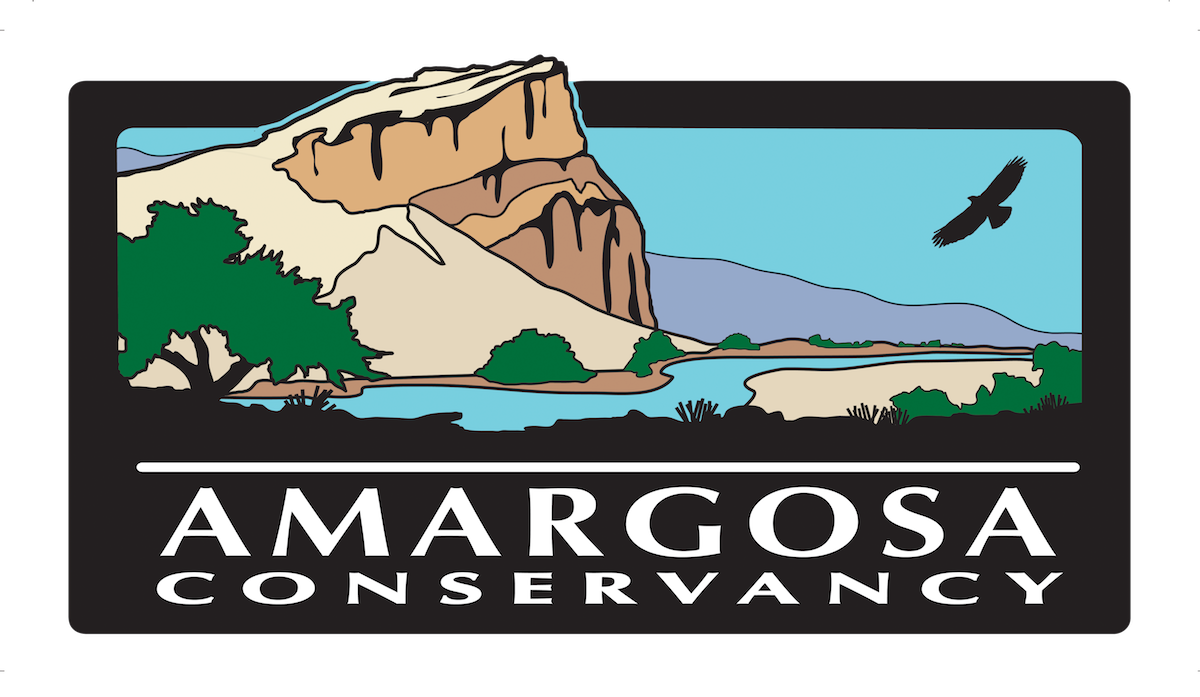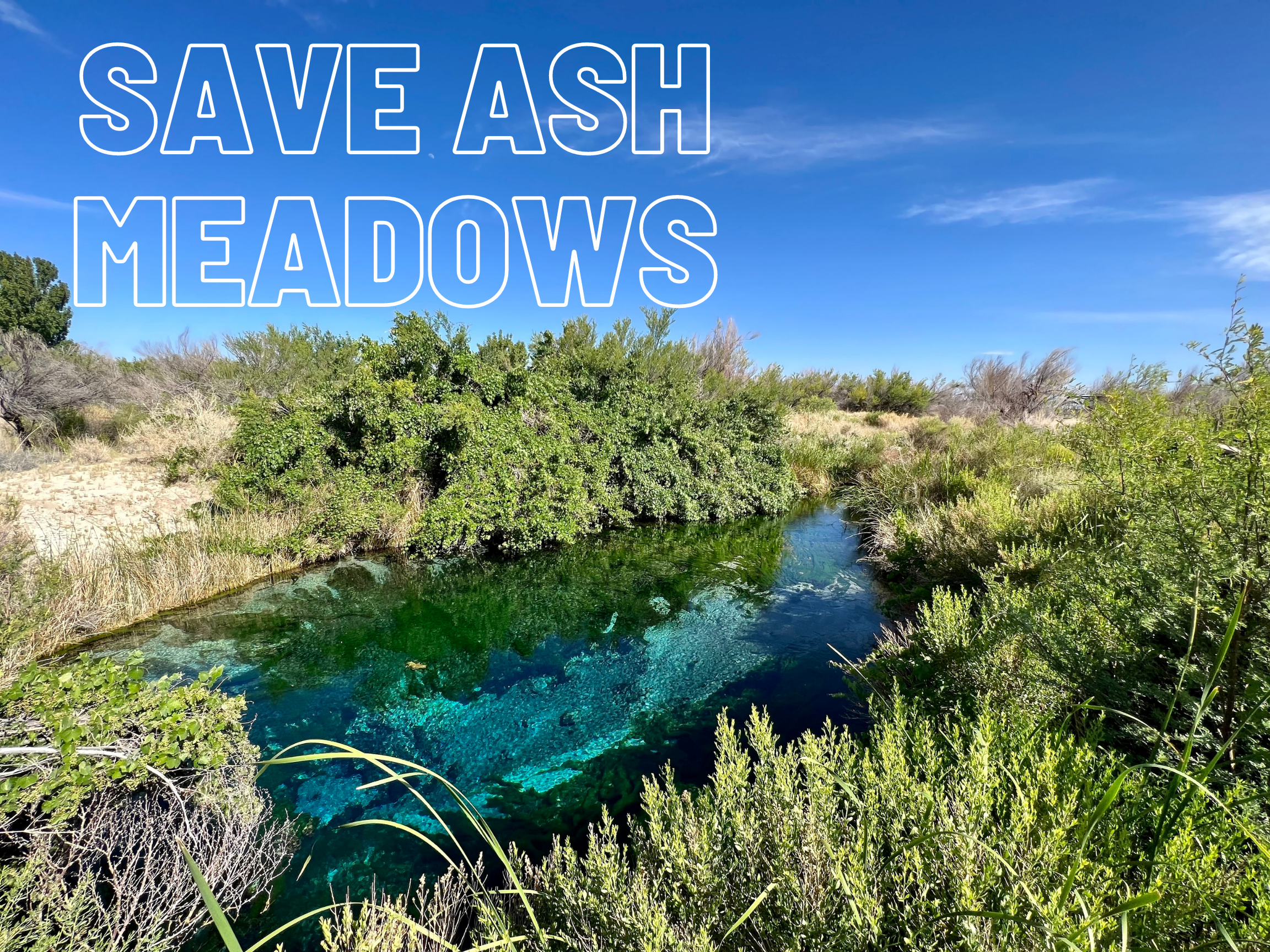On Thursday, July 6th, 2023, the Amargosa Conservancy submitted the following letter signed by 20 local, regional, and national environmental organizations to senior leadership within the Department of Interior:
Request for Consultation, Public Scoping and Environmental Analysis for Rover Metals Let’s Go Lithium Exploration Project near Ash Meadows National Wildlife Refuge, Nevada
Dear Secretary Haaland, Director Stone-Manning, and Director Martha Williams,
We, the undersigned groups, formally request that the Bureau of Land Management require consultation, public scoping and environmental analysis pursuant to the Endangered Species Act (ESA) and the National Environmental Policy Act (NEPA) for Rover Metal’s Let’s Go Lithium exploration project, located on public lands directly adjacent to Ash Meadows National Wildlife Refuge (NWR) near Amargosa Valley, Nevada. The exploration area contains and supports many important biological resources, including federally listed threatened and endangered species that fundamentally depend on the flow of shallow and deep groundwater in this area for their survival. Impacts from drilling activity on or directly adjacent to lands set aside for conservation, research, and cultural significance could be significant and therefore deserve robust interagency consultation, and the highest level of environmental analysis and protection.
Ash Meadows NWR and its Environs
Areas within Rover Metals’ Let’s Go Lithium exploration project include the Amargosa Mesquite Area of Critical Environmental Concern (ACEC008008) and lands managed by the Bureau of Land Management (BLM) directly adjacent to the Ash Meadows Area of Critical Environmental Concern (ACEC008010) and the protected Ash Meadows NWR.
Ash Meadows NWR is located in Amargosa Valley, NV in the heart of the Amargosa River watershed between Las Vegas and Death Valley National Park. The refuge is a major point of discharge for a vast carbonate aquifer that underlies the greater Death Valley ecoregion. The refuge encompasses nearly 24,000 acres of spring-fed wetlands, sloughs, and alkaline desert uplands that are managed by the U.S. Fish and Wildlife Service. Ash Meadows contains more than 30 perennial seeps and springs and many more ephemeral waterways, providing a rich and complex variety of habitats in the hottest and driest desert in North America. Over 10,000 gallons per minute flow within the refuge year round, primarily from seven springs: Fairbanks, Rogers, Longstreet, Crystal, Point of Rocks, Jackrabbit, and Big Springs.
Ash Meadows has the distinction of supporting a greater concentration of endemic life than any other area in the United States and the second greatest in all of North America. The refuge provides habitat for at least 25 plants and animals found nowhere else in the world and 12 species protected as threatened or endangered under the Endangered Species Act. These protected species include three species of fish, seven species of plants, and an aquatic beetle. Additionally, the refuge surrounds a disjunct segment of Death Valley National Park called Devils Hole, home to the Devils Hole pupfish which is considered to be one of the most endangered fish species in the world due to its radically constrained and isolated habitat. These protected species and other endemic forms of life found on the refuge are all existentially dependent on the presence of perennial groundwater discharge for their survival. In light of these and other ecological values, Ash Meadows was further distinguished as a biodiversity hotspot of global significance when it became the 4th designated Ramsar Convention Wetland of International Importance in the United States in 1986.
Other areas within or directly adjacent to the exploration area include the Ash Meadows and Amargosa Mesquite ACECs. These areas were designated in light of the need for special management attention to their ample ecological, historical, and scenic values. Both ACECs support mesquite bosque and other habitat types sustained by the presence of shallow groundwater. In addition to providing critical habitat for numerous resident and migratory species of birds, these ACECs help maintain ecological and hydrological connectivity to Ash Meadows NWR and other downgradient areas of significant biological value, such as the Amargosa Wild & Scenic River.
Proposed Exploration by Rover Metals
Rover Metals has notified the BLM Pahrump Field Office of its intent to drill up to 30 boreholes in close proximity to the boundary of Ash Meadows NWR and the Ash Meadows ACEC. Some proposed borehole locations are within ½ mile of Fairbanks Spring, home to two federally listed endangered fishes, in the northern portion of the refuge. Each borehole would be drilled to a depth of 250-300 feet where the company has acknowledged that groundwater will be encountered.
While the precise interplay between shallow groundwater and the deep carbonate aquifer in the exploration area is not known at this time, the drilling of boreholes in this locale has the potential to impact groundwater flows that sustain downgradient springs in the refuge including Fairbanks, Rogers, and Longstreet springs. In the event that drilling intersects with the deep carbonate aquifer, an uncontrolled artesian flow could lead to a significant dewatering event that could have hugely detrimental impacts to these springs and the endangered Ash Meadows Amargosa pupfish and Ash Meadows speckled dace found therein. Other impacts associated with mining and exploration activities such as blowing dust and increased vehicle traffic and noise also have the potential to degrade sensitive species habitat and interrupt habitat connectivity in this region.
Request for Delay, Consultation, and Robust Environmental Review
While the undersigned groups acknowledge the status of lithium as an increasingly critical element in the transition to a decarbonized energy economy, this end use should not bear on the level analysis appropriate to this project. Rover Metals’ Let’s Go Lithium exploration project poses an exceptional risk to sensitive habitat, threatened and endangered species, and other significant resources on public lands, within and adjacent to the exploration area. Given the exceptional values of regional, national, and global importance present in Ash Meadows NWR and its environs, it is essential that the impacts of exploration and other mining activities in this locale be considered and robustly reviewed.
We request that the Bureau of Land Management take immediate action to ensure that the Let’s Go Lithium exploration project does not unduly impact groundwater dependent ecosystems of global importance, by:
- Initiating formal consultation with the U.S. Fish and Wildlife Service regarding the potential impacts of the project;
- Requiring that Rover Metals file a Plan of Operations (POO) for the project;
- Conducting environmental review of the POO pursuant to NEPA, including an Environmental Assessment or an Environmental Impact Statement, as appropriate.
Additionally, it is imperative that the BLM consider all potential future connected actions including the development of a full-scale industrial mining operation as part of public scoping and consultation, and in its initial review. Special consideration must be given to the viability of an industrial mine of any scale in this locale given the area’s abundance of sensitive and endangered groundwater-dependent species. Consultation with the Nevada State Engineer regarding dewatering and point of diversion restrictions associated with future connected actions should be pursued in light of the exploration project’s potential bearing on Devils Hole and other federal reserved water rights associated with affected designated lands.
Ash Meadows is beloved by millions of people around the world — this is an issue that resonates far beyond the confines of Nye County, Nevada. We urge BLM to ensure public transparency throughout the process of analyzing this project, and we ask that BLM make the maximal possible effort to engage stakeholders who may be affected by this project, including those down the Amargosa River in California; those who use Ash Meadows NWR for recreational, scientific, aesthetic, or spiritual purposes; and the tribal communities who have called this landscape home since time immemorial.
We are counting on BLM to get this one right. One of the world’s most significant epicenters of biodiversity hangs in the balance.
Sincerely,
Mason Voehl Executive Director Amargosa Conservancy Geoffrey L. Haskett President National Wildlife Refuge Association Robert Przeklasa, Ph. D. Executive Director Native American Land Conservancy Chris Clarke Ruth Hammett Associate Director, California Desert Program National Parks Conservation Association Linda Stout Conservation Chair Toiyabe Chapter, Sierra Club Linda Castro Assistant Policy Director CalWild Kyle Roerink Executive Director Great Basin Water Network Kelly Herbinson and Cody Hanford Co-Executive Directors Mojave Desert Land Trust Wendy Schneider Executive Director Friends of the Inyo Katie Fite Public Lands Director WildLands Defense Donald A. Molde, M.D. Co-Founder Nevada Wildlife Alliance Leslie Sonne Citizens to Protect Smith Valley (NV) Kevin Emmerich Co-Founder Basin and Range Watch Darcy Shepherd Associate Director Friends of Nevada Wilderness Ian Bigley Southwest Region Program Staff Earthworks John Hadder Executive Director Great Basin Resource Watch Taylor Patterson Executive Director Native Voters Alliance Nevada Cameron Mayer Program Director Friends of the Amargosa Basin Pamela Flick California Program Director Defenders of Wildlife Rachel Bergren Executive Director Get Outdoors Nevada

